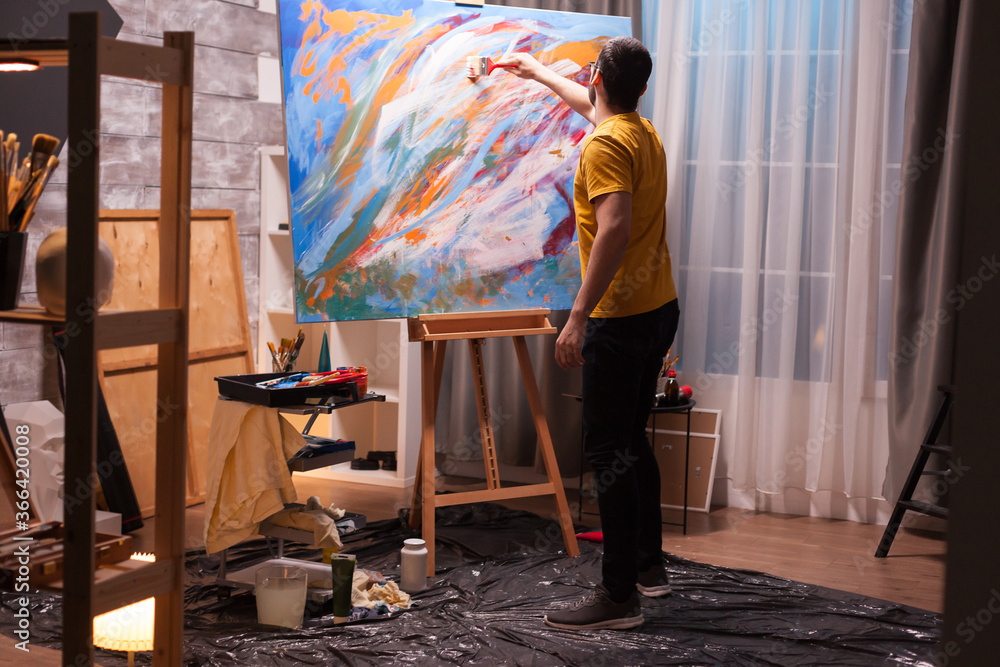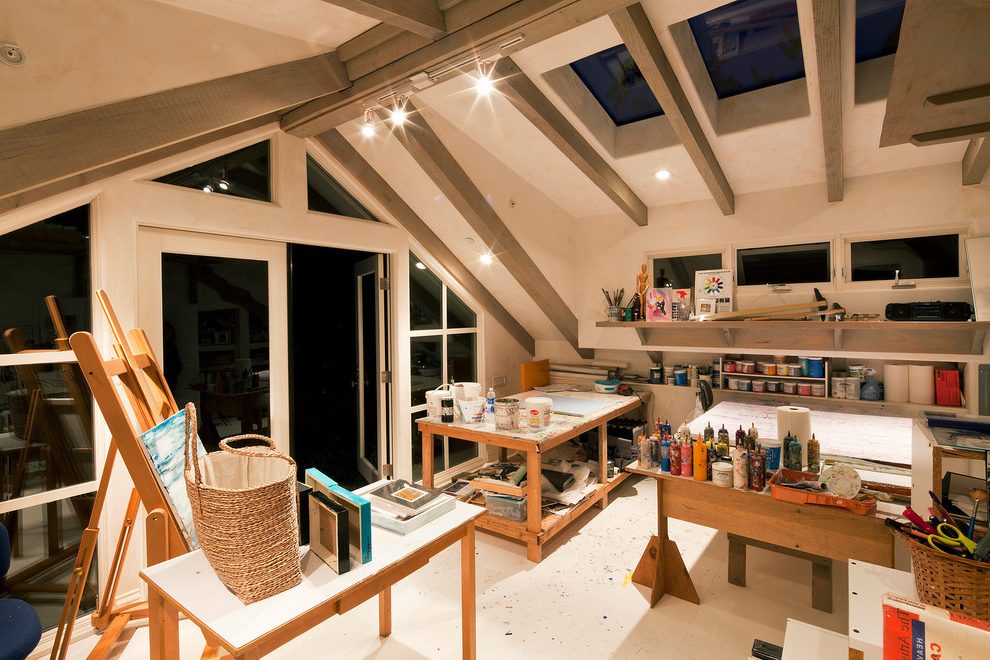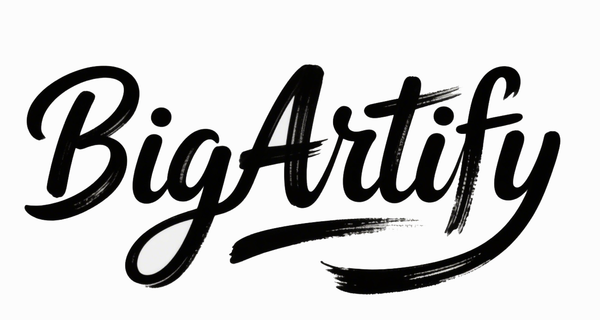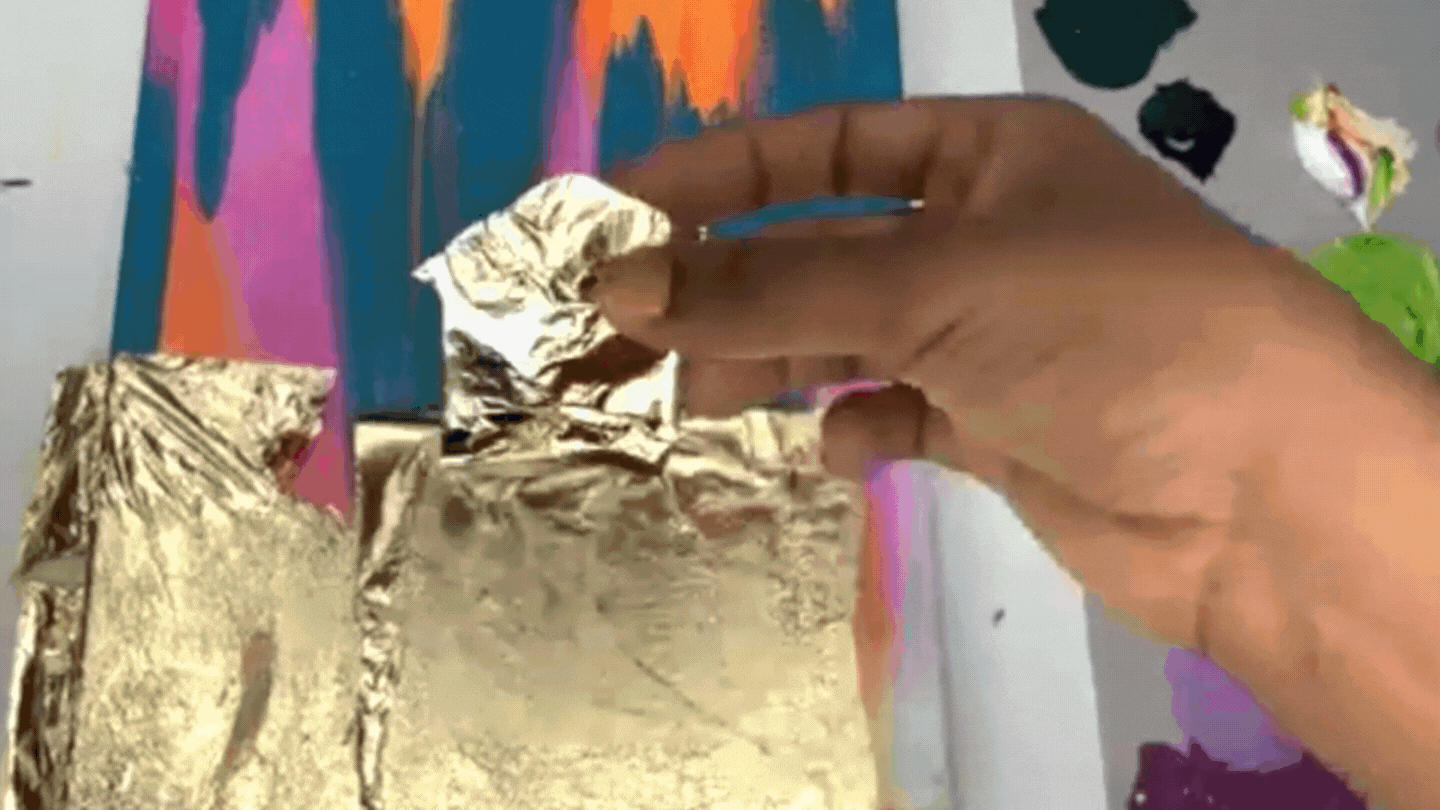Best Tips for Creating Big Canvas Art: A Guide for Artists
Venturing into the world of Big Canvas Art can be a transformative experience for any artist. Whether you're an emerging painter or a seasoned professional, scaling up your work to larger formats introduces a new level of excitement, challenge, and creative freedom. Large canvases demand more than just bigger brushes—they require thoughtful planning, adapted techniques, and a mindset shift toward bold, immersive expressions. In this comprehensive guide, we'll draw from expert insights and practical advice to help you master the art of painting on grand scales. From preparation to execution, these tips will empower you to create stunning pieces that command attention and elevate your artistic practice.
As an artist myself, I've spent years experimenting with various sizes, from intimate sketches to monumental murals. Big Canvas Art isn't just about size; it's about engaging your entire body in the process, turning painting into a dynamic performance. Small works offer quick satisfaction, but large ones evoke a sense of exhilaration, like dancing across a vast stage. Extra-large formats push boundaries, necessitating innovative tools and methods. If you're ready to break free from your comfort zone, let's dive into why going big can reignite your passion and how to do it successfully.
Why Embrace Big Canvas Art?
Painting on a large scale offers unique benefits that can revitalize your creative process. Firstly, it encourages broader gestures and bolder decisions, fostering a sense of liberation. As noted in resources from the Metropolitan Museum of Art, historical artists like Jackson Pollock revolutionized Abstract Expressionism by working on massive canvases laid flat on the floor, allowing for uninhibited movement. Similarly, contemporary creators find that big formats amplify emotional impact, making artworks more immersive for viewers.
Switching to Big Canvas Art can also combat creative ruts. If you're accustomed to small pieces, the physicality of large works—requiring full-arm sweeps and step-back evaluations—stimulates new ideas. It builds confidence, as overcoming logistical challenges leads to profound satisfaction. Moreover, large pieces often fetch higher prices in galleries, appealing to collectors seeking statement art. However, the journey involves overcoming hurdles like material costs and space constraints, which we'll address below.

Handling Large Canvases: Practical Strategies
Working with oversized canvases requires careful handling to avoid damage and ensure efficiency. Always lift and move canvases from the wooden stretcher bars, not the canvas itself, to prevent tearing or warping. For flat work, position the canvas between two sturdy tables, creating a bridge that allows easy flipping or rotation. Elevate tables with bed risers for ergonomic height, reducing back strain—essential for long sessions.
When vertical orientation suits your style, lean the canvas against a wall for stability, using a drop cloth to protect floors. Employ a step ladder for upper sections or a rolling stool for lower areas, maintaining balance. This setup is ideal for non-drip techniques like dry brushing or layering. For inspiration, consider how Georgia O'Keeffe adapted her desert studio for large floral abstractions, emphasizing natural light and open space.

Scaling Your Vision: From Small Sketch to Grand Canvas
One of the biggest challenges in Big Canvas Art is maintaining proportions when enlarging designs. Start with a small-scale model or thumbnail sketch, then use a grid system to transfer it accurately. Divide your reference into equal squares and replicate the grid on the canvas, scaled up. A string method is particularly effective: measure and tape strings across the canvas to form the grid without permanent marks, avoiding pushpin holes that could weaken the surface.
Alternatively, digital tools like projectors or apps from Adobe can beam your design directly onto the canvas for tracing. This ensures fidelity while saving time. Remember, scaling isn't just mechanical—adjust for visual impact, as details that work small may need exaggeration on large formats to retain energy.

Equipping Yourself: Larger Tools for Bigger Impact
Standard brushes often fall short for large-scale work, so opt for oversized versions from art suppliers or hardware stores. Synthetic bristle brushes hold ample paint, while foam rollers apply even base coats quickly. DIY hacks shine here: bundle several small brushes with tape or attach them to a wooden dowel for custom widths, perfect for broad strokes.
Don't overlook palettes—use large trays or disposable plastic sheets for mixing generous batches. For textured effects, incorporate palette knives or even household items like squeegees. Resources from Dick Blick Art Materials offer a wide selection tailored for big projects.

Preparation and Setup: Laying the Foundation
Success in Big Canvas Art begins with meticulous preparation. Here's a curated list of essential tips:
- Prime Your Canvas Thoroughly: Apply multiple layers of gesso for a smooth, absorbent surface. This prevents paint from soaking unevenly and enhances vibrancy.
- Invest in a Robust Support System: Use heavy-duty easels or build custom stands. For floor work, protect surfaces with tarps.
- Select Quality Brushes and Knives: Prioritize tools that handle volume, like wide filberts or fan brushes for blending.
- Organize Your Space: Designate zones for wet paints, clean tools, and references to minimize chaos and boost efficiency.
These steps set the stage for seamless creation, echoing practices in professional studios like those at the Royal Academy of Arts.

The Painting Process: Techniques for Mastery
Once prepared, dive into the process with these proven strategies:
- Adapt Your Strokes: Use full-body movements for sweeping applications, building momentum.
- Employ Grids for Precision: As mentioned, grids maintain scale; remove them post-transfer.
- Start Centrally: Work outward to ensure compositional balance.
- Reference Sketches: Keep thumbnails handy for guidance.
- Batch Mix Colors: Prepare ample paint to avoid mid-session inconsistencies.
- Large Palette Surfaces: Opt for glass or acrylic sheets for easy cleanup.
- Layer Strategically: Build from thin underpaintings to thick impastos.
- Access High Areas Safely: Ladders or extenders prevent overreaching.
- Plan Compositions Digitally: Use software for previews.
- Dark to Light Progression: Establishes depth effectively.
- Avoid Overworking: Step back frequently for perspective.
- Incorporate Breaks: Combat fatigue with regular pauses.
- Experiment Boldly: Try new mediums like gels for texture.
- Enjoy the Journey: Embrace imperfections as growth opportunities.
These techniques, inspired by masters like Claude Monet, turn challenges into triumphs.
Recommended Materials for Big Canvas Art
Choosing the right materials is crucial. Acrylic paints dry fast and are versatile for layering. Oils offer rich textures but require patience. Watercolors suit washes on primed canvases, while mixed media adds dimension—think collage or embedded objects.
For specialty effects, imitation gold leaf elevates pieces with metallic sheen. Apply adhesive, press leaf, and seal before overpainting. Brands like Speedball provide quality options.
Advanced Techniques to Elevate Your Work
Explore glazing for luminous depths, impasto for tactile surfaces, scumbling for subtle textures, and stenciling for patterns. These methods, detailed in guides from Artists Network, add complexity to large works.
Optimizing Your Workspace
A functional studio is key. Ensure good lighting, ventilation, and storage. Modular furniture allows flexibility, while ergonomic tools reduce injury risk.
Additional Insights: Patience and Practice
Mastering Big Canvas Art demands patience—large works take time. Practice on smaller scales first, and don't fear revisions. Community resources, like forums on WetCanvas, offer peer support.
In conclusion, embracing big formats unlocks new artistic horizons. With these tips, you'll create impactful art that resonates deeply.
FAQ
Why should I try painting on big canvases? It encourages bold creativity, physical engagement, and can lead to more immersive, valuable artworks.
What tools do I need for large-scale painting? Oversized brushes, sturdy easels, gesso for priming, and ladders for reach.
How do I scale up my designs accurately? Use a grid system with strings or digital projectors to maintain proportions.
What materials work best for big canvas art? Acrylics for speed, oils for texture, and gold leaf for accents.
How can I organize my workspace for large projects? Designate zones for supplies, use modular storage, and ensure good lighting and ventilation.


